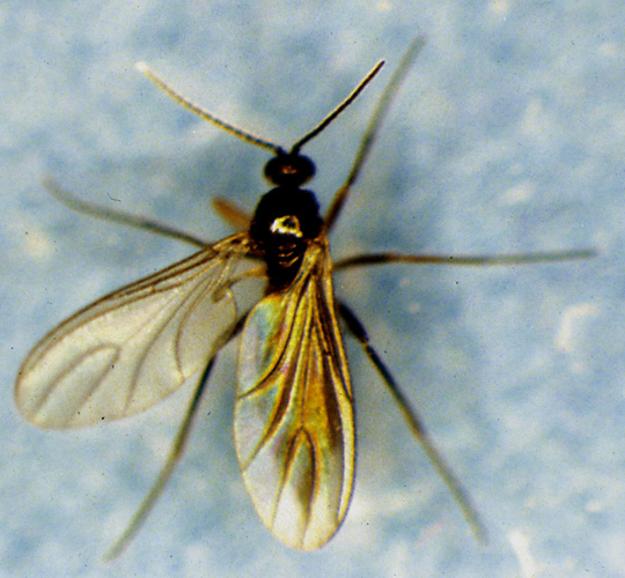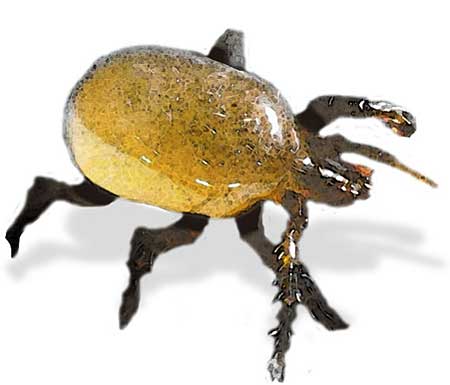
THE GNAT.
THE gnat does not always have pretty gauze wings, so that it can fly through the air. Indeed, when it is young, you would not know that it was a gnat at all.
It does not then live in the air, but in the water. The mother gnat lays her eggs on top of the water. These eggs all stand endwise in a little cluster, so as to form a boat. Young gnats always live in water. If you were to stand a bucket of water outdoors in the summer time, you would in a few days find it full of young gnats. They look just like long worms. The gnat-worm always hangs with its head down, so that it can breathe through a little tube that it pushes out of the water. In the course of three weeks it has changed its skin three times. By and by it changes its skin for the fourth time, and also changes its form. Before, it was of an oblong shape; but now it is shorter and more rounded.
It cannot eat when in this form, for it has no organs to use in digesting its food. Instead of having one tube to breathe through, it has two shorter tubes, that look like long ears. When the gnat wants to move, it bends its tail up under its head, and then straightens out, thus pushing itself through the water.
By and by the insect makes one more change. It straightens itself out, raising the larger end of its body a little above the water. Then the skin splits very rapidly between the two breathing trumpets, lengthening and broadening until you can see the insect inside. Pretty soon the gnat pulls itself nearly out of its covering. It is now in great danger; for its wings are not dry, so that it can fly away, and if it were to tip over, it would drown. When the wind drives these little insects around on the water from one place to another, they look like little boats with very tall masts.
But the gnat does not long stay in such an unsafe position. It has three pairs of legs; and it now draws the first two pairs out of its case, and leaning over, places its four feet upon the water, just as you see it doing in the picture on this page.
Now it can unfold its wings, and let the air dry them. Then away it flies, if you try to catch it. By this time the gnat looks like any of the insects flying through the air.
We are 'not glad at all to have full-grown gnats around, for their stings are very unpleasant. The trunk, with which the gnat pierces the skin, is very curiously made. It is really a bundle of little swords enclosed in a case. This case is split from end to end, so that the gnat can easily thrust his sword into the skin. When he is hungry, he pierces the skin with his sword, and sucks up a drop of blood.
It does not seem as if the prick of a little instrument a great deal smaller than the finest cambric needle could make such a smart, does it?
Indeed, it could not, if the gnat did not leave a drop of liquid poison in the wound. If you were to put a drop of water on the sting, instead of scratching it, it would not be so painful.
Mosquitoes are one kind of gnat. Did you know, when you were trying to kill them, how wonderfully they were made?
W. E. L.
Fungus Gnat
